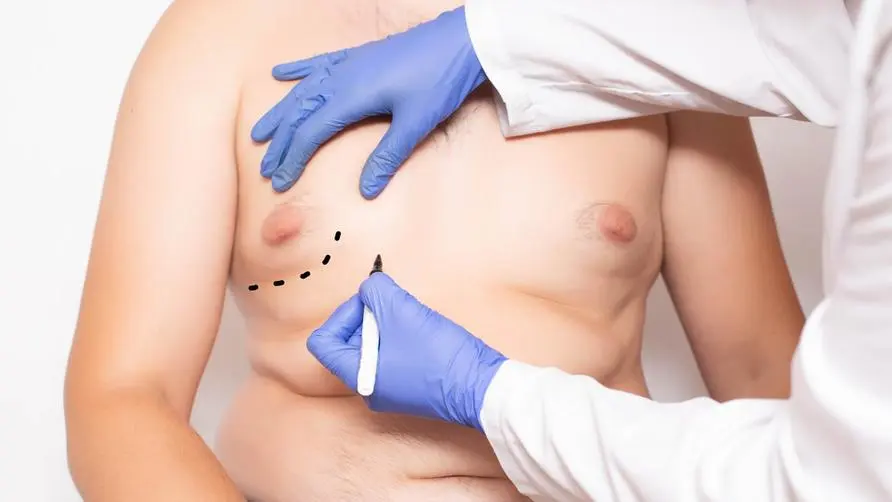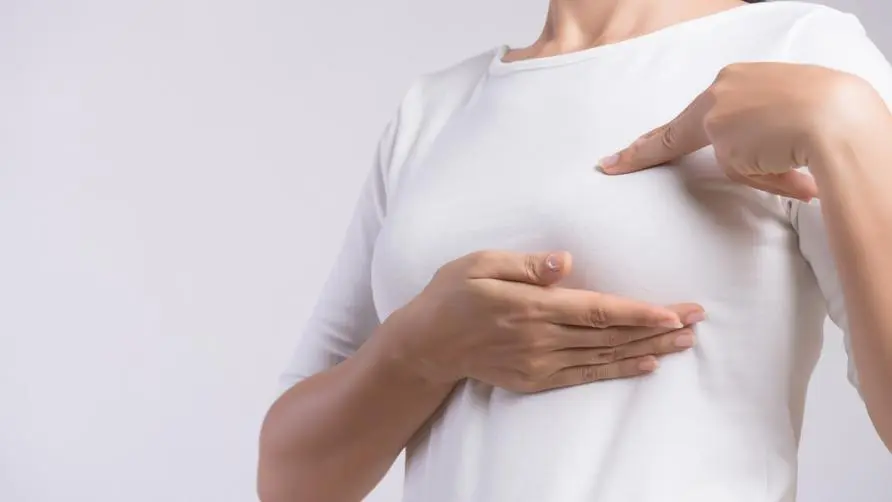Men with large areolas and protruding nipples should beware of "gynaecomastia"! Doctor: Obesity and poor eating habits may be the main causes

He lost 25 kilograms but had no breasts. Doctor: Gynecomastia is related to 9 factors
Men are not obviously obese but have abnormally protruding breasts. Is this a precursor to gynecomastia? Dr. Wu Wenhong, director of the plastic surgery department of Guangtian General Hospital, said that there was a 27-year-old male patient in the clinic. He lost weight from nearly 100 kilograms to about 75 kilograms, but his chest did not “dissipate”. He had no choice but to seek help from a doctor for diagnosis, and found out that he was suffering from the disease. “Gynecomastia” was significantly improved after microliposuction and surgery.
Dr. Wu Wenhong explained that the male patient had a round figure since he was a child, but he started to notice enlarged areolas and protruding nipples in junior high school. He was often teased by his peers. As a result, he suffered from low self-esteem and long-term hunchback and did not dare to raise his head or stand up, even wearing a summer coat. The patient is 180 centimeters tall and weighs 75 kilograms after losing weight. She has a very standard figure, but she feels quite inferior because of her gynecomastia.
Dr. Wu Wenhong pointed out that “gynaecomastia” refers to the enlargement of male breast glandular tissue. It is mainly due to “eating habits” and “obesity”, which leads to a hormonal imbalance of estrogen and testosterone, causing male breast swelling. In addition, adrenal gland disease, kidney disease, liver disease, thyroid disease, male breast cancer, alcoholism, or taking a variety of drugs such as anxiety, depression, and antibiotics may cause gynecomastia.
No need to leave embarrassing scars after surgery! “Two major therapies” combined to solve gynecomastia
Most patients with gynecomastia have low self-esteem that affects their social life, such as not being able to take off their clothes in front of others, wearing heavy coats even in hot weather, etc. Dr. Wu Wenhong explained that early surgical methods were often prohibitive due to large postoperative wounds, long recovery periods, obvious scars, and unsatisfactory results.
However, gynecomastia can currently be treated with a “complex comprehensive method”, which involves a micro-incision of 1-2 cm from the lower edge of the areola, micro-liposuction to remove 50% of the fat, and then mastectomy to remove 50% of the breast, and Microscopic sutures leave no visible scars. Six months after the operation, the 27-year-old man’s figure was no different from that of an average man. He not only regained his confidence, but also developed a habit of exercise and continued to work towards a more toned body.
Dr. Wu Wenhong emphasized that gynecomastia does not affect health, but if you are seriously concerned about your appearance, you can consider surgical treatment. The stitches will be removed in 7 days and the recovery period will be about 1 week; unless stimulated by external hormonal drugs, Generally, the breast will not proliferate again after removal.
Dr. Wu Wenhong said that the breasts of patients with gynecomastia are mostly benign tissues and rarely have malignant lesions. If a hard lump is suspected, further ultrasound, mammography, and pathological laboratory examinations can be performed. The public is urged to pay more attention to their eating habits, stay away from fried foods, sweets and sugary drinks, and be active in exercise and fitness, which can initially prevent the occurrence of gynecomastia.
Further reading:





